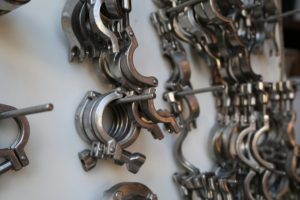

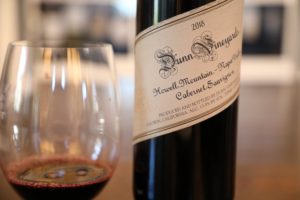 Dunn Vineyards dates from 1979 when Randall (Randy) and Loralee (Lori) Dunn purchased their original 14-acre property high on the slopes of Howell Mountain and produced their first wine that same year. The property was already planted to Cabernet Sauvignon at the time. The home on site dates from 1890; it was used as one of the Stagecoach stops between Pope Valley and Napa Valley and used to be owned by Chuck Wagner (owner of Caymus Vineyards). Warren & Barbara Winiarski, the founders of Stag’s Leap Wine Cellars lived here for a short while. Today the old home houses their offices. This is one of the oldest continuously producing wineries on Howell Mountain; perhaps only Summit Lake Vineyards is older.
Dunn Vineyards dates from 1979 when Randall (Randy) and Loralee (Lori) Dunn purchased their original 14-acre property high on the slopes of Howell Mountain and produced their first wine that same year. The property was already planted to Cabernet Sauvignon at the time. The home on site dates from 1890; it was used as one of the Stagecoach stops between Pope Valley and Napa Valley and used to be owned by Chuck Wagner (owner of Caymus Vineyards). Warren & Barbara Winiarski, the founders of Stag’s Leap Wine Cellars lived here for a short while. Today the old home houses their offices. This is one of the oldest continuously producing wineries on Howell Mountain; perhaps only Summit Lake Vineyards is older.
Over the years that we have been working on this project, we have met a number of Howell Mountain vintners who have been influenced by owner Randy Dunn – i.e., he has helped them with their initial winemaking, or provided advice on a particular variety, vineyard layout details or wine-making matters. Randy (born in Berkeley, CA) was originally studying Entomology (a branch of Zoology focusing on insects) at UC Davis when he made some home wine with a professor. Hooked by the process of making this initial wine, Randy soon switched his major to Enology. He took his first job in Napa Valley working for Caymus Winery in 1975, only three years after Caymus began producing wines and the same year they introduced their iconic Special Selection bottling. Randy was their winemaker through the 1985 harvest. When Dunn joined Caymus, the winery was producing less than 10,000 cases of wines a year and by the time Dunn left production had reached 80,000 cases a year. The 1984 Caymus Cabernet Sauvignon Napa Valley Special Selection was named Wine Spectator’s Wine of the Year in 1989.
Howell Mountain was Napa’s first sub appellation, gaining its status in 1983 (same year as Carneros). Randy was was one of the founding vintners who laid the groundwork for creating the Howell Mountain AVA along with vintners’ Bill Smith, Bob Brakesman, Mike Beatty and Bob Lamborn. Over the years Dunn has been an important consultant or winemaker for several of his Howell Mountain neighbors including Lamborn Vineyards and WH Smith as well as others around the valley including Pahlmeyer, Palmaz and the old Livington Moffet winery, the present day site of DANA Estates. The first two vintages of Palmaz were produced at Dunn Vineyards prior to the Palmaz cave winery being completed.
While supporting the efforts of Dunn Vineyards, for years Lori was also extremely involved in helping the local Howell Mountain Elementary School. In fact, in 1992 she and Randy founded what has become the much loved annual wine auction, raising money for the school held every June at Charles Krug Winery. While the expenses to put on the show each year are high, the money raised from this annual auction over the years has been very impressive. Randy and Lori’s children are actively involved in the business; Randy’s stepson Mike, who has his own label Retro Cellars, is an integral part of Dunn Vineyards. And Mike’s son Alex also works at Dunn Vineyards – primarily with the viticultural part of their operations although he puts his artistic talents to use at times including building the Dunn Vineyards gate.
Dunn Vineyards is located in a very rural part of Howell Mountain; the vineyards are surrounded by native vegetation. Randy and Lori purchased 64 acres of additional nearby land in 2004 (Sentinel Hill property) and then quickly donated it to the Napa Land trust so it will never be developed. And later they donated five million dollars to help purchase the 3,000 acre Wildlake Ranch. After their donation the name of this property became known as the Dunn-Wildlake Preserve. This is the refreshing type of philosophy they have in regard to keeping a natural balance between native vegetation and vineyards on Howell Mountain.
During several visits, we have walked some of their vineyard blocks; across each of their vineyards the vines are planted at an elevation of approximately 1,800 to 2,150 feet. Their vineyards do not dominate the landscape like on the valley floor – rather there is plenty of surrounding forest land. Yields on the mountain are generally low, usually no more than 2 tons per acre.
 Today the family farms 42 acres of vines spread over 5 distinctive Howell Mountain sites, four of which they own. Under their ownership is Alta Terra Vineyard which was the original vineyard the family purchased in 1978 and previously was called the Trailer Vineyard based on an old trailer that was previously parked here next to a pump; the vineyard name was changed in 2013 when they replanted it. In addition, they own Lake Vineyard next to the physical winery at about 1,800 feet in elevation planted primarily to Cabernet Sauvignon but also to some small blocks of Petite Sirah and Peloursin (along with Syrah, one of the parent grapes of Petite Sirah), Park Muscatine Vineyard and their most recent acquisition in 2018, Eagle Summit Vineyard. The Dunn’s don’t own Frank Vineyard but have managed it since 1979; this site is named in honor of Henry Frank.
Today the family farms 42 acres of vines spread over 5 distinctive Howell Mountain sites, four of which they own. Under their ownership is Alta Terra Vineyard which was the original vineyard the family purchased in 1978 and previously was called the Trailer Vineyard based on an old trailer that was previously parked here next to a pump; the vineyard name was changed in 2013 when they replanted it. In addition, they own Lake Vineyard next to the physical winery at about 1,800 feet in elevation planted primarily to Cabernet Sauvignon but also to some small blocks of Petite Sirah and Peloursin (along with Syrah, one of the parent grapes of Petite Sirah), Park Muscatine Vineyard and their most recent acquisition in 2018, Eagle Summit Vineyard. The Dunn’s don’t own Frank Vineyard but have managed it since 1979; this site is named in honor of Henry Frank.
Based on its differing elevation and soils, the vineyard is highly nuanced. Some of their weaker lower blocks now produce more expressive wines based on vine age and overall global warming. In 2022 during the extreme heat spike centered around Labor Day weekend, they harvested some of the Cabernet Sauvignon growing on the uppermost portions of the property, well after the heat had abated, at only 23 brix. Harvest at Dunn Vineyards generally lasts several weeks.
Charles Muscatine and his wife Doris used to own the Park Muscatine Vineyard prior to the Dunn’s purchase of this property in 1991. The vineyard was previously planted to Carignane and Zinfandel; Ridge Vineyards made wine from this site in the early 1980s. Both Charles and Doris were culinary experts. Doris was one of California’s food and wine culture pioneers – having wrote a number of culinary books including co-authoring the thick book The University of California/Sotheby Book of California Wine with Maynard A. Amerine and Bob Thompson. During her career, she also hosted several television programs including Cook’s Tour with Doris Muscatine in 1964.
Incidentally Charles’ brother Leonard and his wife Draselle purchased property in Atlas Peak off of Soda Canyon in 1998. For several years after Leonard’s passing, Draselle and her son Tom produced wine from their own property bottled as Muscatine Vineyard.
The Dunn Vineyard vintages 1979, 1980 and 1981 were made at Caymus Vineyards and then each year, trucked up to their property to age. While at Caymus, Dunn also helped make some of the early Grace Family Vineyards (1978-1983) prior to Grace Family building their own small winery. In 1981 Dunn Vineyards was bonded as a commercial winery. Even early on Dunn was garnering some excellent press. An article in the October 9, 1985, issue of the San Francisco Examiner had this to say about his wines, “Dunn wines are difficult to find, even in California. But they are worth a special look, as they are among the best California has to offer.”
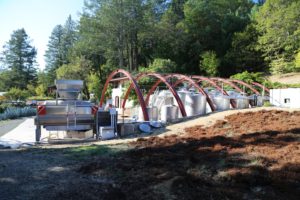
 As Dunn Vineyards outgrew their storage facilities, they built a cave for barrel storage in 1989 with driller Glenn Ragsdale overseeing its construction. Since the early 1980s they have focused on two single varietal wines, a Howell Mountain Cabernet Sauvignon and a Napa Valley Cabernet Sauvignon. The Napa Valley Cabernet Sauvignon is usually 100% varietal, crafted from younger vines on the estate and also non estate grapes. From 2012 through 2019 the non estate grapes were from Coombsville while starting in 2021 the non estate grapes have transitioned to primarily from Oak Knoll District and Yountville. The Howell Mountain Cabernet Sauvignon is always 100% varietal and always entirely estate grown.
As Dunn Vineyards outgrew their storage facilities, they built a cave for barrel storage in 1989 with driller Glenn Ragsdale overseeing its construction. Since the early 1980s they have focused on two single varietal wines, a Howell Mountain Cabernet Sauvignon and a Napa Valley Cabernet Sauvignon. The Napa Valley Cabernet Sauvignon is usually 100% varietal, crafted from younger vines on the estate and also non estate grapes. From 2012 through 2019 the non estate grapes were from Coombsville while starting in 2021 the non estate grapes have transitioned to primarily from Oak Knoll District and Yountville. The Howell Mountain Cabernet Sauvignon is always 100% varietal and always entirely estate grown.
And they only produce the El Camino Reserve during exceptional years in which they assemble a limited bottling distinctive from their Howell Mountain Cabernet Sauvignon. As of our latest update to this review, this wine has been produced in the following vintages: 2012, 2013, 2017, 2018, and 2021. It is created from the best barrels in a vintage from the oldest vines on the property.
Lots from each of their vineyards are harvested, fermented and aged separately. These include lots they call the ‘edges’, typically grapes picked from three rows lining the edges of their vineyards. And the final assemblage of these lots is always done blind by the winemaking team.
Starting in 2004 Mike began experimenting with a variety of coopers, taking a less assertive approach on the wines from the standpoint of barrel aging. While they have worked with up to 13 different coopers before, now they use barrels from 6 coopers. The wines are racked and returned approximately every 6 months during their aging.
Improvements to both the vineyard and in the cellar are made incrementally. For example, Mike began farming the block of Syrah organically; now their entire vineyard is farmed organically. Randy used to till the vineyards; today they no longer till. They planted hedgerows and increased the diversity of their cover crops, thus encouraging a greater diversity of insects. And their efforts have paid off; analysis of their soil based on soil pit samples proves their careful farming has improved the soil – revealing a much higher level of organic matter than used to be present.
And they acquired a crusher de-stemmer with a roller sorter for sorting out unwanted material after destemming but before crushing. They have experimented with this including processing some of the grapes with the rollers and some without. And in 2019 they transitioned from wooden chucks supporting their barrels in the cellar to cleaner arched stainless steel cradles.
Total production varies depending on vintage but is typically between 4,000 and 5,000 cases annually.
Select Wines
Howell Mountain Cabernet Sauvignon
The 2021 Dunn Vineyards Howell Mountain Cabernet Sauvignon is deep ruby and opaque; this wine was aged in 100% new French oak barrels. Compared to the 2021 bottling of the Napa Valley Cabernet Sauvignon, this wine shows a bit more barrel influence, especially on the bouquet. Its scents include dark chocolate, chocolate brownie, mocha, old baseball mitt being used on a hot day and dried sage with dark fruits including blackberry, boysenberry and Persian mulberry. Well layered; at this age the palate showcases loads of fruit and structure. Its flavors include cherry, red plum, dark raspberry, boysenberry and blackberry. Fully ripe but not over ripe this wine features plenty of firm and persistent gripping mountain structure with a lasting drying and chalky character. Its texture eventually pulls away from the fruit.
 The 2019 Dunn Vineyards Howell Mountain Cabernet Sauvignon is deep ruby and nearly opaque in color; generous immediately in terms of its fruit expression on the bouquet, there are scents of blackberry, boysenberry jam, baked plums, dark cherry and a note of dark chocolate and cocoa powder. For reference, we tasted this wine 5 years post vintage and its fruit smells and tastes like it was just picked yesterday. And we should note that its aromatics smell riper than what is expressed on the palate. Intensely flavored, the palate offers notes of blackberry, dark cherry, plum and blueberry. This vintage and this bottling in particular, shows plenty of depth and character. And a brightness. The tannins are grainy, gravelly, persistent and mountain-esque for sure, lingering with a dusty, chalky and gripping character which ultimately outpaces the fruit on the extended finish. But for a youthful Dunn bottling, it is showing remarkably well at this age. 13.9% alcohol.
The 2019 Dunn Vineyards Howell Mountain Cabernet Sauvignon is deep ruby and nearly opaque in color; generous immediately in terms of its fruit expression on the bouquet, there are scents of blackberry, boysenberry jam, baked plums, dark cherry and a note of dark chocolate and cocoa powder. For reference, we tasted this wine 5 years post vintage and its fruit smells and tastes like it was just picked yesterday. And we should note that its aromatics smell riper than what is expressed on the palate. Intensely flavored, the palate offers notes of blackberry, dark cherry, plum and blueberry. This vintage and this bottling in particular, shows plenty of depth and character. And a brightness. The tannins are grainy, gravelly, persistent and mountain-esque for sure, lingering with a dusty, chalky and gripping character which ultimately outpaces the fruit on the extended finish. But for a youthful Dunn bottling, it is showing remarkably well at this age. 13.9% alcohol.
The 2018 Dunn Vineyards Howell Mountain Cabernet Sauvignon is deep ruby in color; right on the front of the bouquet are aromas of bramble, blackberry, boysenberry, along with old cedar box and a light toasted oak nuance. The bouquet is dark fruited with its fruit core showing more as the wine evolves in the glass along with notes of chocolate and darker baking spices. There is a dried herb note here also including of sage. This wine offers flavors of black cherry, blackberry and chocolate. The textural reputation of the Dunn Cabernet Sauvignon bottlings can be somewhat intimidating. The Dunn trademark texture is clearly evident on this wine – if we were to choose one word to describe its textural characteristics it would be: dense. The tannins clearly envelop the palate fully, are tightly packed together, and one can feel their broadly distributed pixelated and persistent grip for quite some time. We don’t make a habit of tasting old parchment paper, but perhaps the sensation of doing so is what one experiences with the dusty character on this finish. A light tobacco spice note also lingers. This wine is best served with some protein in its youth or with 15-20 years of proper cellaring. We don’t always describe Napa Valley Cabernet Sauvignon under 14% alcohol as a meal in a glass, but this wine is a good candidate for that description. This bottling was aged for approximately 32 months in 100% new French oak barrels. For reference we tasted this 5 years post vintage.
The 2015 Dunn Vineyards Howell Mountain Cabernet Sauvignon is deep ruby and opaque; sweetly fruited and ripe, the bouquet offers aromas of cherry pie, blackberry jam, boysenberry spread and dark cherry. The accompanying spices are pretty; they include allspice, clove, cumin, vanilla, dark chocolate and mocha. At this age, 10 years post vintage, it has started showing a light bottle bouquet. But still plenty fresh, its flavors include dark raspberry, cherry, blackberry, boysenberry and mulberry. The tannins are incredibly youthful with time in bottle perhaps only starting to soften their edges; they linger with a firmly gripping dusty and chalky character that fully coats the palate and far outpaces the fruit on the finish. This wine is showing in a sweet spot at this age, but has so much life ahead of it with the proper cellaring. We would love it paired with a well-marbled cut of Wagyu steak and a BBQ. Enjoy anytime from now for at least another 10-20 years.
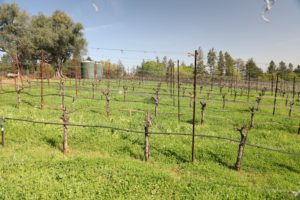 The 2011 Dunn Vineyards Howell Mountain Cabernet Sauvignon shows plenty of character on the nose with layers including dusty and note of dark pepper. On the palate the wine is mouthwatering and juicy showcasing bright acidity with broad shouldered (somewhat chalky) and long lasting tannins. The structure on this wine is perhaps not quite as robust as some of the other young Dunn wines we have tried, but is an excellent example of a great wine produced during a challenging vintage.
The 2011 Dunn Vineyards Howell Mountain Cabernet Sauvignon shows plenty of character on the nose with layers including dusty and note of dark pepper. On the palate the wine is mouthwatering and juicy showcasing bright acidity with broad shouldered (somewhat chalky) and long lasting tannins. The structure on this wine is perhaps not quite as robust as some of the other young Dunn wines we have tried, but is an excellent example of a great wine produced during a challenging vintage.
The 2004 Dunn Vineyards Howell Mountain Cabernet Sauvignon is crimson ruby in color with an elegant bouquet showing dark chocolate and nuances of raspberry as the bouquet opens. There is a lot of fruit in this wine especially up front with black currant and plum flavors. The palate is a union of rich layers of flavor, bright acidity, a dusty character and well-structured tannins. While full of flavor now, this wine still needs some time to cellar, and it will continue to evolve and reveal new complexities.
Napa Valley Cabernet Sauvignon
The 2021 Dunn Vineyards Napa Valley Cabernet Sauvignon is 77% Cabernet Sauvignon and 23% Cabernet Franc with 45% of the grapes from Oak Knoll District, 37% from Dunn Vineyards, 12% Napa Valley and 6% from Yountville. This wine was aged in 72% new French oak with the remainder neutral barrels. This wine is deep ruby in color; the bouquet immediately opens to a note of petrichor, the lovely smell of dry soil being moistened after a long period of time. Or water poured on dry slate rock. A very subtle note of old cedar box is held close to the vest along with a note of mocha. Other aromas are floral with notes of lilacs along with a scent of dark raspberry and cherry. The palate is primarily red fruited with flavors of cherry, currant and plum with a lingering note of dark chocolate. The grainy and lightly pixelated tannins continue to persist beyond the fruit with a moderate grip on the juicy and tart finish. Immediately enjoyable.
The 2002 Dunn Vineyards Napa Valley Cabernet Sauvignon is deep ruby; the bouquet reveals scents of red cherry, baking spices and hints of mocha. After 13 years at the time of our tasting, this wine still offers bright lively aromatics and smells younger than it actually is. The tannins have become more balanced and have perhaps softened over time; as a result, they are now fairly well integrated into the overall structure. The palate sports notes of red cherry and cranberry anchored by a fresh acidity which lingers brightly for quite some time.
—
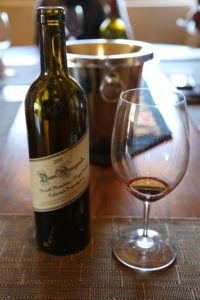 Note the unusual design and placement of the labels; they are set on the bottles at an angle and spiral around its circular shape. This design has not changed since the founding of the winery. In addition, their Howell Mountain Cabernet Sauvignon was coated with wax through the 2018 vintage transitioning to foil starting with the 2019 vintage – certainly appreciated by their restaurant partners. Only the Reserve El Camino bottling is now waxed as are large format bottles of the Howell Mountain Cabernet Sauvignon.
Note the unusual design and placement of the labels; they are set on the bottles at an angle and spiral around its circular shape. This design has not changed since the founding of the winery. In addition, their Howell Mountain Cabernet Sauvignon was coated with wax through the 2018 vintage transitioning to foil starting with the 2019 vintage – certainly appreciated by their restaurant partners. Only the Reserve El Camino bottling is now waxed as are large format bottles of the Howell Mountain Cabernet Sauvignon.
The Dunn Vineyards Napa Valley Cabernet Sauvignon tends to have softer tannins whereas the Howell Mountain Cabernet Sauvignon is a bigger wine with more robust tannins and intensity of fruit. Both wines are built to age for a long time and will only become more complex with additional cellar time, but can certainly be consumed in their youth.
Dunn keeps the alcohol percentage in their wines lower than most area vintners, typically in the mid to high 13 range. This is maintained by several processes including de-alcoholization, a process which is conducted by reverse osmosis. This is always done off site. Based on vintage variation including ripeness, during some years they are able to pick early enough that no manipulation is needed to keep the final alcohol reading below 14%.
Dunn creates terroir driven wines; Randy’s philosophy is that one needs to be able to taste where the wines are from. Wines that are high in alcohol generally lose the distinguishing characteristics that allow one to distinguish a sense of place because they are often accompanied by over ripe fruit flavors, sometimes a slight residual sugar and a higher pH. And these characteristics also affect texture.
The Dunn wines are not trophy wines meant to earn high scores; they are not produced in a riper style, rather these bottlings are made to be enjoyed with food. As Randy told us, these are not “cocktail wines”!
Randy’s wines are often enjoyed by collectors who have the patience and time on their side to lay them down for years. We have enjoyed some of his wines 10-15 years old and they are still very much full of life; the tannins have softened during this aging but are still structurally very noticeable. Even after a decade+ of aging, some of these wines can easily age another decade+ before peaking.
—
Visits are for serious wine enthusiasts and collectors, with guests often already familiar with the Dunn wines or referred by someone who is. They offer a very limited number of tours and tastings by appointment from Monday through Friday. And during busy times of the season, such as harvest in September and October, tastings book up a month or more in advance due to demand.
Dunn maintains a popular mailing list that is currently full, however interested parties can signup to be placed on the wait list. The wines are distributed locally including sometimes at the Oakville Wine Merchant and are sold online through a variety of retailers. Dunn Vineyards maintains a library collection of their wines and sometimes will re-release older vintages to mailing list members. And the wines have limited international distribution including in the United Kingdom, Taiwan and Singapore.
For more information, to schedule a visit, to join their mailing list to be notified of new releases every fall, or to purchase wine, visit: www.dunnvineyards.com
The Dunn Cave
Long Shadows Winery, WA
This winery was founded in 2003 by Washington wine luminary Allen Shoup, the former CEO of Chateau Ste. Michelle for 17 years and a member of Washington’s Vintner Hall of Fame. Long Shadows produces their wines at their winery outside of Walla Walla and operate two tasting rooms, one at the winery and one in Woodinville (about a 4-hour drive between both locations).
In a unique winemaking play, Long Shadows works with 5 well-respected and accomplished vintners to create 7 different labels from grapes grown in the Columbia Valley Appellation. Randy Dunn has been involved since 2003 – he creates Feather, an always 100% varietal Cabernet Sauvignon each year. Napa Valley’s Philippe Melka also produces a wine, Pirouette and master winemaker Bordeaux-based Michel Rolland crafts Pedestal each year.






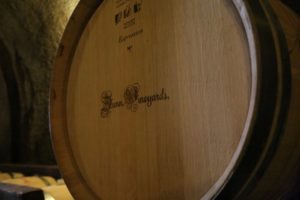
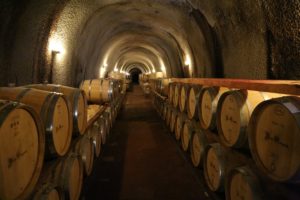
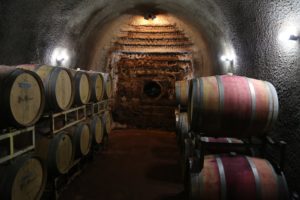
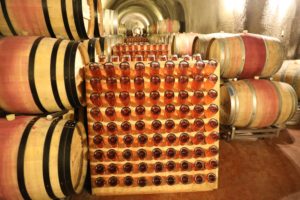

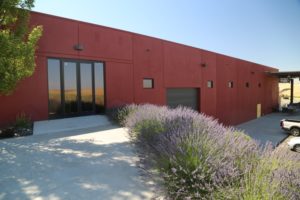
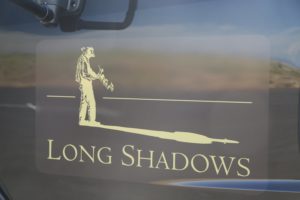
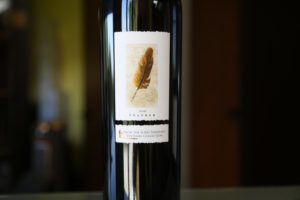
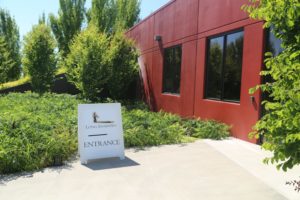
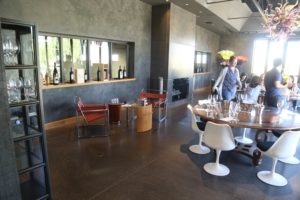
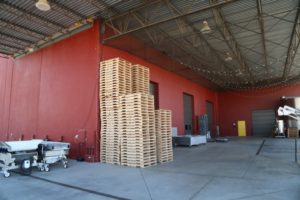
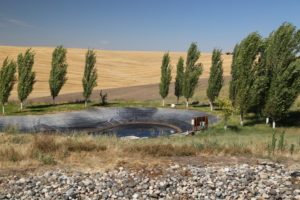
Visit request: 3 adults, Sunday, June 26
Thanks
Natalie Sessler
909-260-0385
Natalie – I hope you enjoyed your time at Dunn and were able to taste a couple of their older bottlings 🙂